Commercial Construction System in Intelligent Construction
Commercial construction in the context of Intelligent construction refers to the application of advanced technologies, data-driven approaches, and smart systems in the development of commercial buildings and infrastructure. This modern approach to construction is focused on enhancing efficiency, sustainability, and functionality in commercial projects. It often involves the use of tools like Building Information Modeling (BIM), Internet of Things (IoT) sensors, artificial Intelligent (AI), and automation to optimize various aspects of commercial construction, including design, planning, project management, and building operations. The goal of commercial construction in Intelligent construction is to create innovative, energy-efficient, and adaptable spaces that meet the evolving needs of businesses and industries.
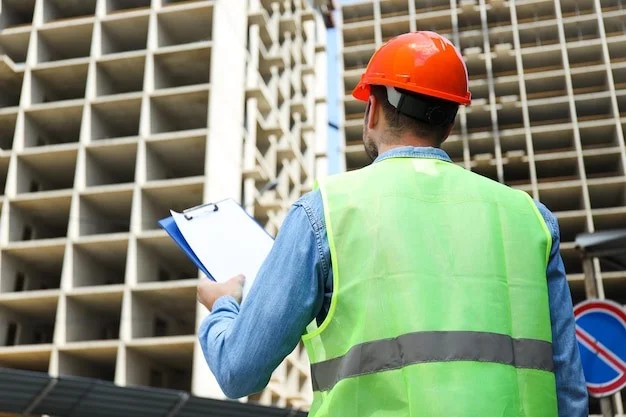
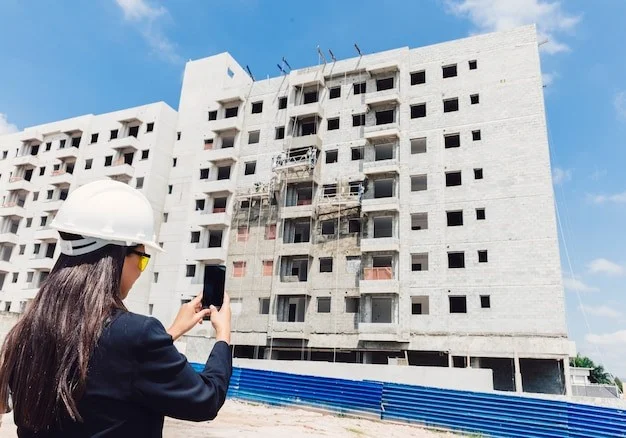
A Glimpse into Our Construction System
Key Aspects of Commercial Construction in Intelligent Construction:
- Smart Building Design: Incorporating intelligent design principles that optimize energy efficiency, space utilization, and occupant comfort. This may involve the use of BIM (Building Information Modeling) for precise planning and design.
- Advanced Materials: Utilizing innovative and sustainable construction materials that offer benefits like improved insulation, reduced energy consumption, and longer lifespans.
- IoT Integration: Implementing Internet of Things (IoT) sensors and devices to collect real-time data on building performance, including temperature, humidity, occupancy, and energy usage.
- Energy Efficiency: Prioritizing energy-efficient systems and technologies, such as LED lighting, energy-efficient HVAC (Heating, Ventilation, and Air Conditioning), and smart thermostats to reduce operational costs.
- Automation: Incorporating automation and control systems for tasks like lighting, security, and climate control, enhancing building management and security.
Warehouse Construction System:
Warehouse construction in the context of intelligent construction refers to the design, planning, and construction of storage facilities or warehouses that incorporate advanced technologies and smart systems to optimize their functionality, efficiency, and overall performance.
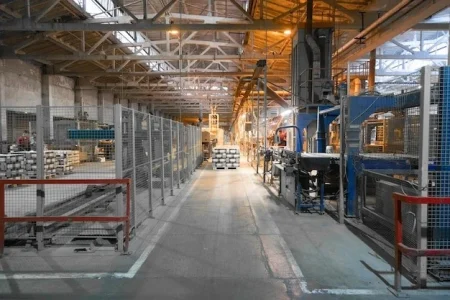
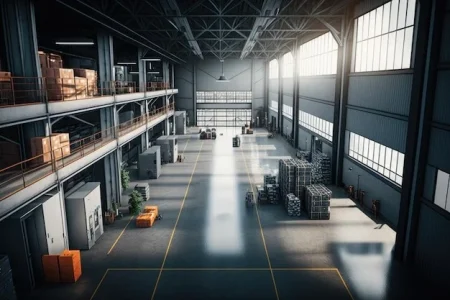
Warehouse Construction Progress through Intelligent & The Art of Warehouse Construction Advancement
Key Aspects of Warehouse Construction in Intelligent Construction:
- Automated Material Handling: Intelligent warehouses often feature automated systems for the movement, sorting, and retrieval of goods. This includes conveyor systems, robotic picking and packing, and autonomous mobile robots (AMRs) that can efficiently manage inventory.
- IoT Sensors: Warehouses may be equipped with a network of IoT sensors to monitor temperature, humidity, and other environmental conditions, ensuring the safe storage of goods, especially those that are sensitive to environmental factors.
- Inventory Management: Intelligent warehouse construction incorporates advanced inventory management systems that use RFID (Radio-Frequency Identification) or barcoding to track products, enabling real-time visibility into stock levels and efficient order fulfillment.
- Predictive Maintenance: Sensors and data analytics are used to predict equipment maintenance needs, reducing downtime and ensuring that machinery functions optimally.
Working of Warehouse Construction System in Intelligent Construction:
Planning and Design Phase:
- Needs Assessment: The process begins with a thorough assessment of the client’s requirements, including storage capacity, handling needs, and any specific industry or regulatory requirements.
- Site Selection: A suitable location for the warehouse is chosen, considering factors such as proximity to suppliers, customers, transportation hubs, and land availability.
Construction Phase:
- Sustainable Materials: Sustainable and energy-efficient construction materials are used to create the building structure, roof, walls, and flooring.
- Automation Integration: During construction, the framework for automation and smart systems is installed. This includes the setup of electrical and data connections necessary for IoT sensors, automation equipment, and other smart technologies.
Integration of Smart Technologies:
- IoT Sensors: A network of sensors is deployed throughout the warehouse to monitor environmental conditions (e. g., temperature, humidity), track inventory, and manage equipment health.
- Automation Systems: Automated material handling systems, conveyor belts, robotic arms, and autonomous mobile robots (AMRs) are integrated into the warehouse to optimize the movement and storage of goods.
Operation and Maintenance:
- Real-Time Monitoring:IoT sensors continuously collect data on environmental conditions, inventory levels, equipment status, and security.
- Data Analytics: Data from sensors and systems are analyzed in real-time to identify trends, optimize inventory management, and predict maintenance needs.
Applications of Warehouse Construction System in Intelligent Construction:
- Logistics and Distribution Centers: Warehouse construction systems are commonly used to create distribution hubs for logistics companies. Intelligent warehouses optimize the storage, retrieval, and distribution of goods, improving supply chain efficiency.
- E-commerce Warehouses: As the e-commerce industry grows, the demand for automated and intelligent warehouses has surged. These facilities are equipped to handle high volumes of online orders efficiently.
- Manufacturing Facilities: Manufacturers use intelligent warehouses to store raw materials, work-in-progress items, and finished products. Automation and real-time tracking enhance production efficiency and inventory management.
- Retail Distribution Centers: Retailers rely on intelligent warehouses to manage inventory and fulfill orders for their stores. Automation and data analytics help reduce out-of-stock situations and optimize restocking.
- Cold Storage Warehouses: Cold storage facilities, such as those for perishable goods, benefit from intelligent construction systems that ensure precise temperature control and inventory tracking.
Architecture & Landscape Design Construction System:
The Architecture & Landscape Design Construction System in Intelligent Construction is a comprehensive approach to designing and constructing buildings and outdoor spaces that incorporates advanced technologies and smart systems to optimize the entire process. This system integrates architectural and landscape design principles with cutting-edge construction technologies to create sustainable, efficient, and aesthetically pleasing environments.
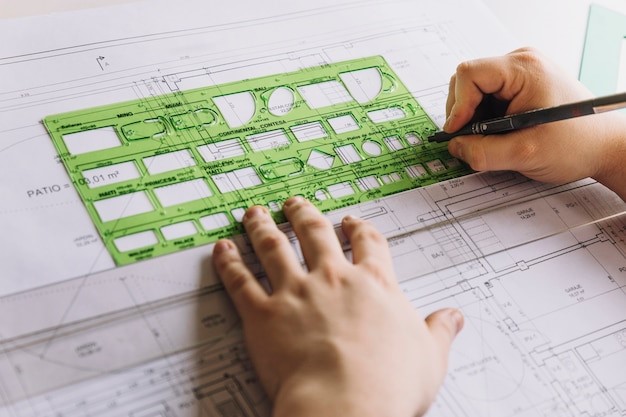
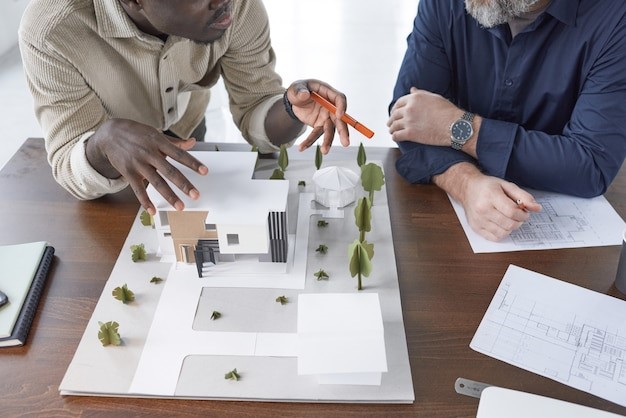
Key Aspects of Architecture & Landscape Design Construction System in Intelligent Construction:
Design Phase:
- Architectural Design: Architects use advanced design software and tools to create innovative building designs. These designs focus on functionality, aesthetics, and sustainability.
- Landscape Design: Landscape architects work on outdoor spaces, incorporating elements like greenery, hardscaping, and sustainable landscaping practices.
Intelligent Design Integration:
- Building Information Modeling (BIM): BIM technology is used to create detailed 3D models of buildings and landscapes. This facilitates collaboration among architects, engineers, and contractors and ensures that all design aspects are well-coordinated.
- Sustainability Analysis: Tools are used to analyze the environmental impact of designs, considering factors such as energy efficiency, water conservation, and material sustainability.
Construction Phase:
- Smart Construction Equipment: The construction site may employ smart machinery and equipment, such as GPS-guided bulldozers and automated construction drones, for precise and efficient construction.
- Material Selection: Sustainable and energy-efficient construction materials are chosen to align with the project’s environmental goals.
Intelligent Systems Integration:
- Smart Building Systems: Buildings incorporate smart systems for lighting, HVAC, security, and access control to enhance energy efficiency, safety, and user experience.
- Landscape Automation: Smart irrigation systems, outdoor lighting, and water features are integrated into landscape design to conserve resources and enhance aesthetics.
Working of Architecture & Landscape Design Construction System in Intelligent Construction:
Planning and Design Phase:
- Needs Assessment: The process begins with a thorough assessment of the client’s requirements, budget, and project goals for both the architectural and landscape aspects.
- Architectural Design: Architects use advanced design software and tools to create innovative building designs, taking into account functionality, aesthetics, and sustainability goals.
- Landscape Design: Landscape architects work on outdoor spaces, incorporating elements like greenery, hardscaping, and sustainable landscaping practices.
Intelligent Design Integration:
- Building Information Modeling (BIM): BIM technology is used to create detailed 3D models that encompass both the architectural and landscape elements. This ensures that all design aspects are well-coordinated and can be visualized in a unified manner.
- Sustainability Analysis: Environmental impact assessments are conducted to evaluate the sustainability of the design. Factors like energy efficiency, water conservation, and material sustainability are considered.
Construction Phase:
- Smart Construction Equipment: Advanced construction machinery and equipment are employed on the construction site. These may include GPS-guided bulldozers, automated construction drones, and robotic equipment for precise and efficient construction.
- Material Selection: Sustainable and energy-efficient construction materials are chosen based on the project’s environmental goals.
Intelligent Systems Integration:
- Smart Building Systems: Smart systems for lighting, HVAC, security, and access control are integrated into the building’s design. These systems enhance energy efficiency, safety, and user experience.
- Landscape Automation: Smart irrigation systems, outdoor lighting, and water features are integrated into the landscape design to conserve resources and enhance aesthetics.
Applications of Architecture & Landscape Design Construction System in Intelligent Construction:
Residential Construction:
- Smart home design integrates architectural and landscape elements to create energy-efficient, aesthetically pleasing residential spaces.
- Landscape design includes features such as smart irrigation, outdoor lighting, and sustainable gardens.
Commercial Buildings:
- Office buildings, shopping centers, and hotels benefit from intelligent designs that optimize space, energy usage, and user experience.
- Landscaping plays a crucial role in creating appealing and environmentally friendly outdoor spaces for customers and employees.
Industrial Facilities:
- Manufacturing plants and warehouses incorporate advanced architectural designs to improve operational efficiency and safety.
- Landscape designs in industrial settings often focus on sustainability and ecological considerations.
Educational Institutions:
- Schools and universities utilize intelligent construction systems to create innovative, technology-equipped classrooms and campuses.
- Landscape design in educational settings enhances outdoor learning environments.
Hospitality Construction System:
Hospitality construction in the context of intelligent construction refers to the design and construction of facilities and spaces within the hospitality industry, such as hotels, resorts, restaurants, and entertainment venues, with a focus on integrating advanced technologies and smart systems to enhance the guest experience, operational efficiency, sustainability, and safety.
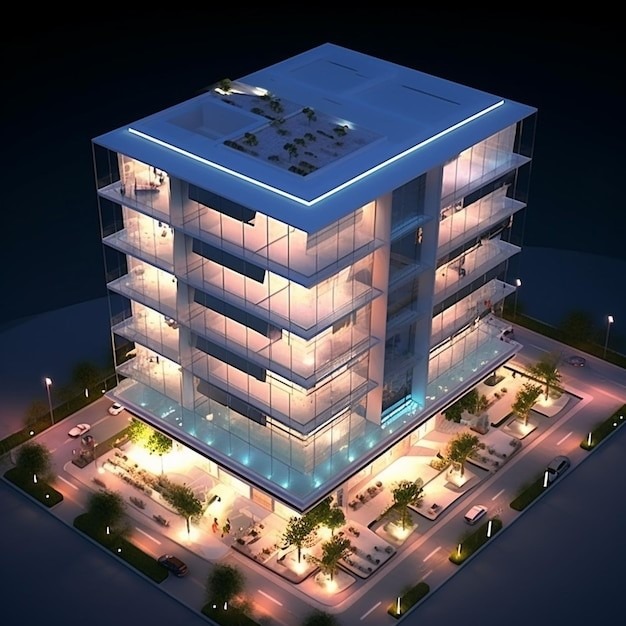
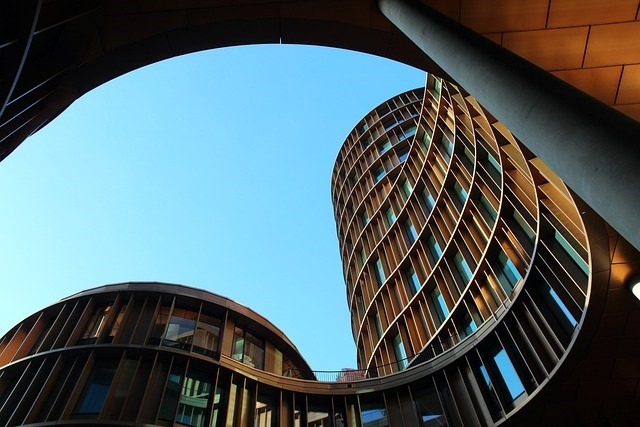
Intelligent Hospitality Construction
Key Aspects and Components of the Hospitality Construction System in Intelligent Construction:
Design Phase:
- Guest Experience-Centric Design: Architects and designers prioritize creating spaces that offer an exceptional guest experience, considering factors like aesthetics, comfort, and functionality.
- Sustainability: Sustainable design principles are incorporated into the planning phase, with an emphasis on energy efficiency, waste reduction, and eco-friendly materials.
Intelligent Design Integration:
- Building Information Modeling (BIM): BIM technology is used to create detailed 3D models that allow for precise coordination among various design aspects, such as architecture, interior design, and engineering.
- IoT-Enabled Design: Designs incorporate IoT (Internet of Things) concepts, including the integration of sensors, automation, and connectivity to enhance operational efficiency and guest convenience.
Construction Phase:
- Advanced Construction Techniques: Modern construction methods and materials are used to expedite construction and ensure quality.
- Energy-Efficient Systems: HVAC (Heating, Ventilation, and Air Conditioning), lighting, and water systems are designed for energy efficiency and sustainability.
Intelligent Systems Integration:
- Smart Building Systems: Buildings are equipped with smart systems that control lighting, climate, security, and room automation to optimize guest comfort and energy efficiency.
- Guest Services Technology: Intelligent guest services technology includes mobile check-in, keyless room entry, and in-room automation for convenience.
Working of Hospitality Construction System in Intelligent Construction:
Needs Assessment and Design Phase:
- The process begins with a thorough assessment of the client’s requirements, including the type of hospitality facility (e. g., hotel, resort, restaurant), target audience, and desired guest experience.
- Architects and designers work on creating a guest-centric design that focuses on aesthetics, functionality, and sustainability. Sustainable design principles are integrated from the outset.
Intelligent Design Integration:
- BIM technology is used to create detailed 3D models that encompass architectural, interior, and systems designs. This ensures precise coordination among various design elements.
- Designers consider the integration of IoT sensors and automation systems to enhance guest experiences and operational efficiency. Concepts like smart rooms and energy management are incorporated.
Construction Phase:
- Modern construction methods and materials are employed to expedite construction while maintaining quality standards.
- Sustainable and energy-efficient systems are installed, including HVAC, lighting, and water systems designed to reduce operational costs and environmental impact.
Intelligent Systems Integration:
- Buildings are equipped with smart systems that control lighting, climate, security, and room automation to optimize guest comfort and energy efficiency.
- Intelligent technology is implemented to enhance the guest experience. This may include mobile check-in, keyless room entry, and in-room automation for convenience.
Applications of Hospitality Construction System in Intelligent Construction:
Hotels and Resorts:
- Intelligent construction is used to design and build luxury hotels and resorts that offer smart rooms, energy-efficient amenities, and advanced guest services.
- Guest-centric designs and technologies such as mobile check-in and keyless entry enhance the overall stay.
Restaurants and Dining Establishments:
- Restaurants benefit from intelligent construction with designs that optimize ambiance, seating arrangements, and kitchen efficiency.
- Smart systems for reservations, ordering, and payment processing enhance the dining experience.
Spas and Wellness Centers:
- Spas and wellness centers use intelligent construction to create serene and eco-friendly environments that promote relaxation and rejuvenation.
- Smart spa rooms with automated climate control and lighting systems contribute to a tranquil atmosphere.
Casinos and Entertainment Venues:
- Casinos and entertainment venues employ intelligent construction to create immersive and dynamic spaces for gaming and entertainment.
- Advanced security systems ensure guest safety and compliance with regulations.
Educational Construction System:
Educational construction in the context of intelligent construction refers to the design and construction of educational facilities, such as schools, colleges, universities, and research centers, with a strong emphasis on integrating advanced technologies and smart systems to create innovative learning environments. The goal is to enhance the quality of education, promote sustainability, improve safety, and optimize operational efficiency.
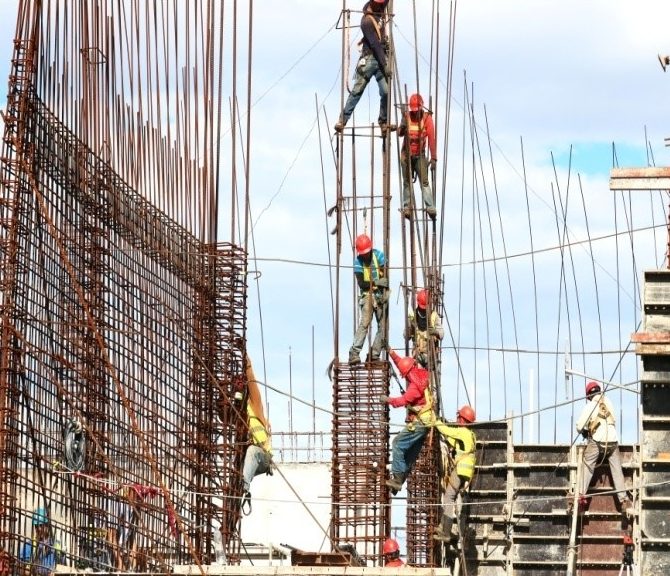

Intelligent Construction Shapes Education Buildings
Key Aspects and Components of the Educational Construction System in Intelligent Construction:
Design Phase:
- Architects and educators collaborate to design spaces that support modern teaching and learning methodologies, encouraging active and collaborative learning.
- Sustainable design principles are integrated from the outset, including energy-efficient building materials, natural lighting, and green building practices.
Intelligent Design Integration:
- BIM technology is used to create detailed 3D models that incorporate architectural, structural, and technological aspects of the design.
- Classrooms and collaborative spaces are designed to facilitate technology integration, including interactive whiteboards, video conferencing, and adaptable furniture.
Construction Phase:
- Modern Construction Methods: Construction utilizes contemporary construction techniques and materials to ensure quality and efficiency.
- Energy-Efficient Systems: HVAC, lighting, and renewable energy systems are designed to minimize operational costs and environmental impact.
Safety and Security:
- Advanced Security Systems: State-of-the-art security systems, including surveillance cameras, access control, and emergency notification systems, are integrated into the design for student safety.
- Fire Safety Measures: Buildings are equipped with modern fire detection and suppression systems to ensure safety compliance.
Working of Educational Construction Systems in Intelligent Construction:
Needs Assessment and Design Phase:
- Educational Goals: The process begins with a comprehensive assessment of the educational institution’s goals, curriculum, and pedagogical approach. This includes understanding the needs of both students and educators.
- Architectural and Pedagogical Design: Architects and educators collaborate to create designs that support modern teaching and learning methodologies. Spaces are designed to encourage active and collaborative learning.
Intelligent Design Integration:
- Building Information Modeling (BIM): BIM technology is used to create detailed 3D models that encompass architectural, structural, and technological aspects. This ensures precise coordination among various design elements.
- Interactive Learning Spaces: Designs include smart classrooms and adaptable learning environments equipped with interactive whiteboards, video conferencing capabilities, and flexible furniture.
Construction Phase:
- Modern Construction Techniques: Advanced construction methods and materials are used to expedite construction while maintaining high-quality standards.
- Energy-Efficient Systems: HVAC, lighting, and renewable energy systems are installed to minimize operational costs and environmental impact.
Sustainable Practices:
- Green Building Certifications: Educational construction projects often aim for LEED or similar green building certifications, demonstrating a commitment to sustainability.
- Waste Reduction: Strategies for waste reduction and sustainable landscaping practices are employed to create eco-friendly campuses.
Applications of Educational Construction system in Intelligent Construction:
K-12 Schools:
- Intelligent construction is used in K-12 schools to create smart classrooms with interactive whiteboards, multimedia equipment, and adaptive lighting.
- Learning spaces are designed to support diverse teaching methods and student needs.
Higher Education Institutions:
- Colleges and universities utilize intelligent construction for campus expansions, new buildings, and renovations.
- Facilities may include advanced lecture halls, research laboratories, and collaborative spaces equipped with state-of-the-art technology.
Research Centers:
- Research institutions and laboratories employ intelligent construction to design specialized facilities for scientific research.
- Laboratories often feature controlled environments, cutting-edge equipment, and safety systems.
Libraries and Learning Resource Centers:
- Libraries incorporate advanced technology for digital resource management, interactive learning spaces, and study areas.
- Energy-efficient lighting and climate control systems enhance the comfort of library users.